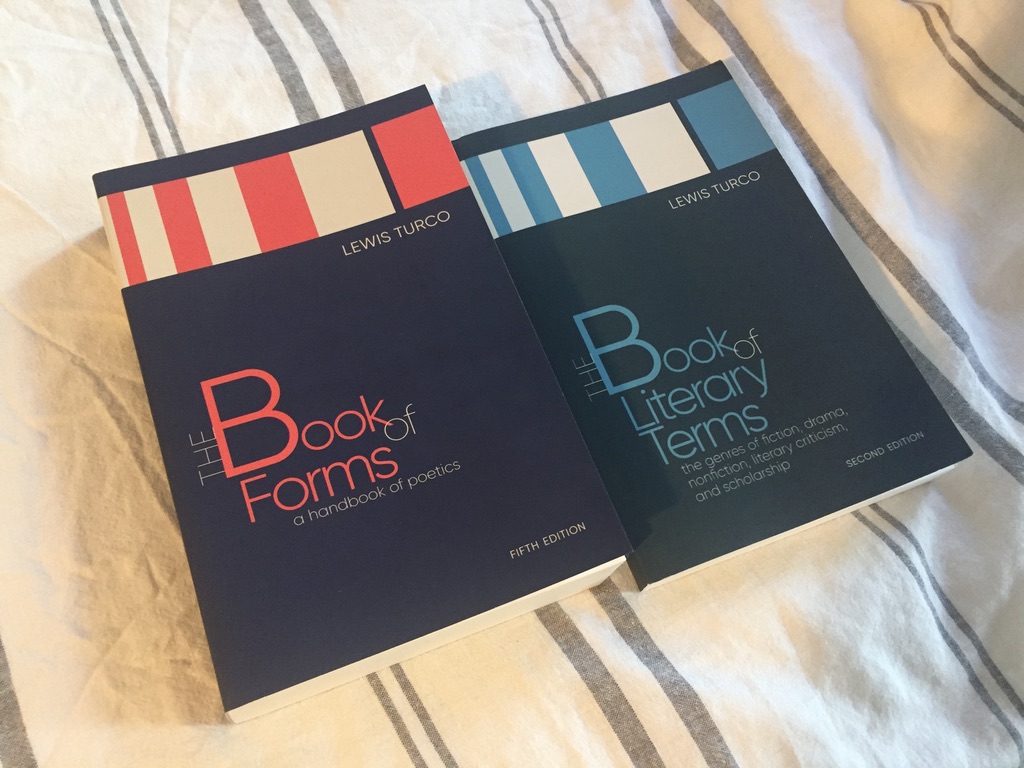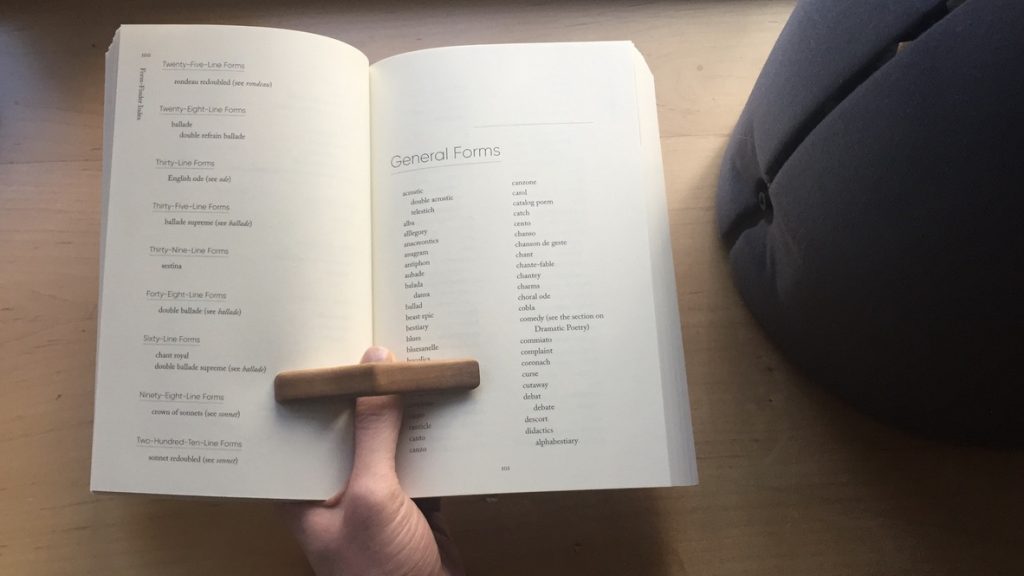
The Book of Forms: a Handbook of Poetics has been a constant in my life ever since its third edition, when I was a teenager in love for the first time.
This new edition caught me by surprise – by the time I heard about The Book of Forms Fifth Edition, it was already on bookstore shelves. Instant gratification! I’ll take it.
The Book of Forms: a Handbook of Poetics by Lewis Turco is a deep, detailed reference for poets and lyricists. This book contains hundreds of poetic forms and techniques to try your hand at.
What’s Inside The Book of Forms: a Handbook of Poetics
The Book of Forms is a thick book with two main attractions.
First, its massive collection of poetic forms: some widely known (sonnet, haiku, villanelle) and others more obscure (kyrielle, cinquain, sapphics). Turco explains all forms clearly, with examples and/or diagrams provided when necessary.
The second attraction in The Book of Forms is its detailed section “The Elements of Poetry.” Among other topics, this section covers:
- An overview of how poetry’s structure evolved in the English language
- The rules of scansion in English-language poetry
- A breakdown of poetry into four levels for detailed discussion: Typography, Sounds, Imagery, and Ideas
The section on rhyme and other sounds is fantastic, and the section on descriptive imagery is great too. The section on typography might be less-relevant to lyricists than it is to poets, but still worth reading.
After such lovingly detailed explanations of sounds and imagery in poetry, you might be excited for the next section, “The Ideational Level,” which is all about thought and ideas in poetry.
Unfortunately, “The Ideational Level” is just a single blocky paragraph. The Book of Forms then points the reader toward The Book of Literary Terms, a companion book, for a longer discussion.
I understand this decision, because The Book of Forms is already quite thick at 431 pages. Nonetheless, it might annoy some readers who were hoping for a more even treatment of all four levels of poetry.
To summarize: this book is highly technical and challenging — but it’s also inspiring. It covers a lot of fascinating poetic techniques, but if you want the complete discussion you’ll need to get its companion volume The Book of Literary Terms. Fortunately, that also just got released in a new edition. They make a good-looking couple, don’t you think?

New in the 5th Edition
Quality-of-life improvements help set The Book of Forms 5th edition apart from previous editions. The book’s pages are now taller and wider, which gave the designers at University of New Mexico Press room to space lines apart for easier reading.

Layout editors have updated the book’s typography, and subheads now make clear visual sense! “The Elements of Poetry” section benefits greatly from this. With previous editions, I used to map the sections and subsections in a notebook to visualize my progress through the text. No need for that now! I can’t believe how much easier this book is to read, browse, use than previous editions were.
Turco has refined some definitions, and you’ll find improved examples here for some poetic terms and forms.
Do typos irk you? If so, the book might occasionally irk you. I’ve noticed two typos so far in the new edition. For example, the middle two stanzas of Frost’s “Stopping by Woods on a Snowy Evening” run together. I also caught “allegory” mistyped as “alllegory.” Small apples though.
The Book of Forms is Best as a Book
Here’s something exciting: The Book of Forms is available in eBook format for the first time!
With that said, the paperback edition is the best way to experience The Book of Forms 5e. It’s a deep and complex book, one that you’ll want to get cozy with. Flipping through at random for inspiration is my favorite way to use The Book of Forms, and flipping pages at random just isn’t easy or intuitive with eBooks yet. Get the paperback first if you can.
Despite the limitations of eBook format, I’m a sucker for this book and I did buy the eBook (even though it costs just as much as the paperback for some reason).
Here’s what I really want, though: a hardbound format for this book. Soon enough, my constant use will crease this paperback’s spine, fray the corners of its pages, and fill its margins with scribbles. When I think back to previous editions, I can’t even remember what they looked like when new.
If I ever take a break from guitar practice, piano practice, vocal practice, and lyric studies… I may need to figure out how to turn this paperback into a homemade hardback so that it can survive my constant thumbing.
My Experience with The Book of Forms
I’ve kept different editions of The Book of Forms on my shelf and in my backpack since 2004. Trying my hand at forms in this book has made me a far better lyricist than I would’ve been without it. I thank Lewis Turco and the University of New Mexico Press for their great work here.
How to Get It
In short: The Book of Forms is available from online booksellers in paperback and eBook formats.